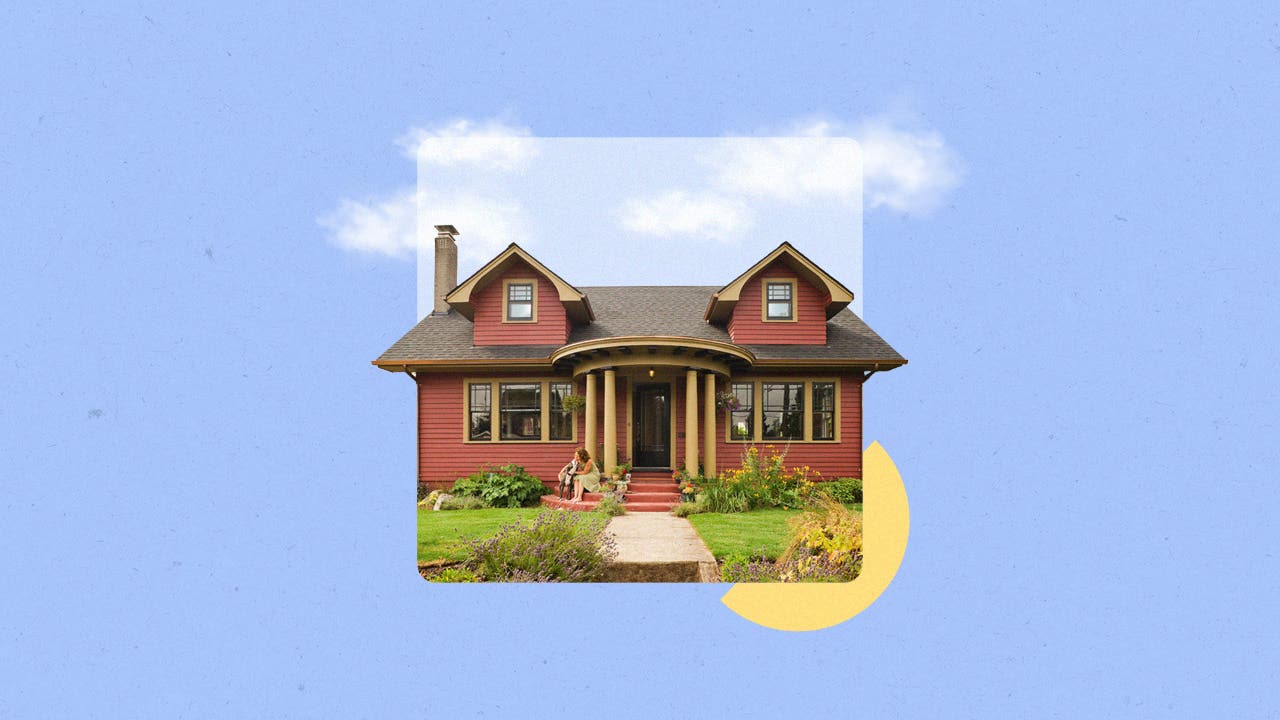What is a mortgage?

Key takeaways
- A mortgage is a loan that helps you purchase a home, with the home itself serving as collateral.
- Mortgage payments typically consist of principal (the amount borrowed), interest, property taxes and homeowners insurance. They can also include mortgage insurance.
- To qualify for a conventional mortgage — the most common type — you’ll typically need a credit score of 620 or higher and at least 3 percent of the home price for a down payment.
What is a mortgage?
A mortgage is a loan used to buy a house. Mortgages are available with a variety of terms — the length of time to repay the loan — but they usually range between eight and 30 years. You repay your mortgage in monthly installments, which typically include both interest and principal payments — although interest-only mortgages also exist — as well as escrow payments to cover property taxes and homeowners insurance.
How does a mortgage work?
When you get a mortgage, you have a set loan term to repay the debt as well as a total loan amount to repay. The majority of each payment goes toward interest and principal, or your original loan balance.
Most mortgages are fully amortized, meaning they’re repaid in installments — regular, usually equal payments on a set schedule, often monthly, with the last payment paying off the loan at the end of the term. At the beginning of your loan term, more of each payment goes toward interest, while, toward the end of your loan term, more goes toward principal. The exception to this process is the uncommon balloon mortgage, where you pay a lump-sum at the end of the loan term.
Mortgages are also secured loans, meaning that they’re backed by collateral — in this case, your home. If you default on your mortgage — fail to make payments — your home can enter into foreclosure and your lender can reclaim it.
Key mortgage terms
- APR: An APR, or annual percentage rate, reflects the yearly cost of borrowing the money for a mortgage. APR includes the interest rate, discount points and other fees that come with the loan, meaning it better reflects the total cost of borrowing than the interest rate alone.
- Down payment: The down payment is the amount of a home’s purchase price a homebuyer pays upfront. Buyers typically put down a percentage of the home’s value, then borrow the rest in the form of a mortgage. Different kinds of mortgages have varying minimum down payments.
- Escrow: An escrow account holds the portion of a borrower’s monthly mortgage payment that covers homeowners insurance premiums and property taxes. Escrow accounts also hold the earnest money the buyer deposits after their offer has been accepted.
- Mortgage servicer: A mortgage servicer is the company that issues your mortgage statements, collects your payments, manages your escrow account and handles other day-to-day tasks related to your loan after it closes.
- Underwriting: Mortgage underwriting is the process by which a bank or mortgage lender assesses the risk of lending to a particular individual. The underwriting process requires an application and takes into account factors like the prospective borrower’s credit report and score, income, debt and the value of the property they intend to buy. Many lenders follow standard underwriting guidelines from Fannie Mae and Freddie Mac.
Current mortgage interest rates
Mortgage rates fell to historically low levels during the COVID pandemic, bottoming out at an average of 2.65 percent in January 2021. However, after the Federal Reserve began raising rates in March 2022, mortgage rates generally followed suit. After increasing to an average of 7.79 percent in October 2023, rates have remained above at least six percent ever since. Due to recent economic uncertainty, though, they’ve been on a downward trend.
Keep in mind that the mortgage rate analysts are typically discussing is the 30-year fixed mortgage rate. While 15-year fixed mortgage rates respond to all the same market forces, they’re often somewhat lower than the rates for 30-year mortgages.
Mortgage requirements
There are many different types of mortgages, and most have slightly different requirements for borrowers. For example, government-backed loans may allow borrowers with lower credit scores and more debt than conventional loans. Within conventional loans, adjustable-rate mortgages may require higher down payments than fixed-rate loans.
Conventional loans are by far the most common type of home loan. To qualify for a conventional loan, you’ll likely need a credit score of at least 620 and a down payment of at least three percent. Typically, debt payments — including your new mortgage payment — must also make up no more than 45 percent of your income.
Types of mortgages
There are several types of mortgages available to borrowers.
- Conventional loans: A conventional mortgage is not backed by the government or a government agency; instead, it’s originated and guaranteed through a private-sector lender, like a bank, credit union or mortgage company.
- Jumbo loans: A jumbo loan exceeds the size limits set by U.S. government agencies and has more stringent underwriting guidelines.
- Government-insured loans: These include VA loans, USDA loans, and FHA loans, and have more relaxed borrower qualifications than many privately backed mortgages.
- Fixed-rate mortgages: Fixed-rate mortgages have a set interest rate that remains the same for the life of the loan, often 15 or 30 years.
- Adjustable-rate mortgages: An adjustable-rate mortgage (ARM) has an interest rate that fluctuates, following general interest-rate movements and financial market conditions. There’s often an initial fixed-rate period for the loan’s first few years, and then the variable rate kicks in for the remainder of the loan term.
What is included in a mortgage payment?
There are four core components of a mortgage payment: the principal, interest, taxes, and insurance. These are collectively referred to as “PITI.” There can be other costs included in the payment, as well.
- Principal: The original amount of money you borrowed from a mortgage lender to purchase your home. If you made a $50,000 down payment on a $400,000 home, for instance, your loan principal is $350,000.
- Interest: Interest is what the lender charges you to borrow that money; it’s the “cost” of the loan. Expressed as a percentage, the interest is based on the loan principal.
- Property taxes: Your lender typically collects the property taxes associated with the home as part of your monthly mortgage payment. It then holds the money in an escrow account and uses it to pay your tax bill when it comes due.
- Homeowners insurance: Homeowners insurance provides you and your lender a level of protection in the event your home sustains major damage. Like your property tax payments, your lender usually breaks your homeowners insurance premium into monthly installments, collects them in your escrow account, and then uses the money to pay your bill.
- Mortgage insurance: Your monthly payment might also include a fee for private mortgage insurance (PMI). This type of insurance is usually required when a buyer makes a down payment of less than 20 percent of the home’s purchase price with a conventional loan. If you default and the lender has to foreclose, PMI covers some of the shortfall between what a lender can recoup by selling your property and what you still owe on the mortgage.
How to compare mortgage offers
Once you’ve done the prep work to apply for a mortgage, including working on your credit and saving up for a down payment, you can apply for preapproval. Ideally, you should seek preapproval with a handful of lenders — at least three — and compare their offers.
Different lenders have slightly different underwriting requirements, and even if you’re preapproved with every lender, you might find that the rate and terms you’re offered vary. As you compare offers, focus on the APR, as opposed to the interest rate, as it reflects the all-in cost of borrowing. One loan may have a higher interest rate than another, but lower fees, leading to a lower total APR.
FAQ
Additional reporting by Taylor Freitas









